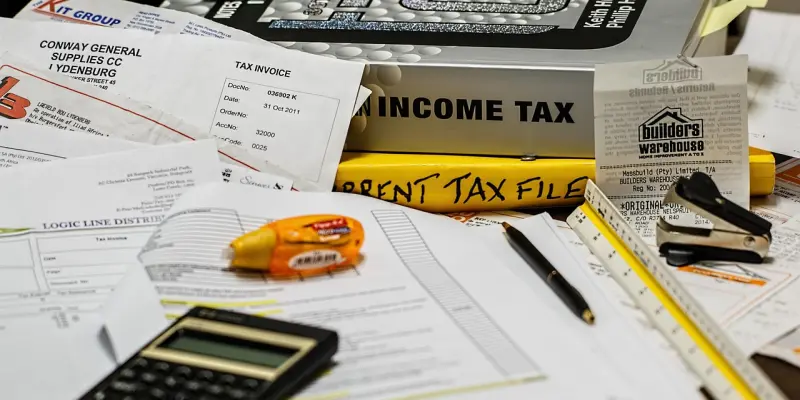The ongoing financial difficulties faced by UK businesses, exacerbated by a sudden surge in employer tax hikes, are becoming ever more apparent. A notable 50% increase in the number of UK companies experiencing “critical financial distress” was observed between September and December 2024. This figure, which rose to an alarming 46,583 companies from 31,201 in the previous three months, signifies the mounting pressure on businesses across various sectors. Companies are grappling with this financial turmoil due to a combination of higher operational costs, stringent tax regulations, and a challenging economic climate.
Increased Financial Distress in Key Sectors
Hospitality and Leisure Facing Severe Strain
The hospitality and leisure industries have been particularly hard hit by the recent tax hikes and elevated business costs. These sectors, already struggling to recover from pandemic-related setbacks, are now facing renewed financial strain due to increased payroll taxes and rising national insurance contributions. The additional financial burden has resulted in many businesses within these industries reporting severe cash flow problems, and some are on the brink of insolvency.
The rising national minimum wage has compounded these issues, making it increasingly difficult for employers to maintain staffing levels. Given the labor-intensive nature of these sectors, many businesses have been forced to reduce their workforce or cut back on operational hours to stay afloat. The ongoing economic instability, coupled with weak consumer confidence, has made it difficult for these businesses to forecast future revenue streams and plan accordingly. As a result, the hospitality and leisure sectors are facing an uncertain future, with many establishments teetering on the edge of closure.
Retail and Construction Under Pressure
Similarly, the retail and construction sectors are feeling the pinch from the recent tax hikes and heightened business costs. Retailers, who are already contending with shrinking profit margins and changing consumer behaviors, are now grappling with increased employer national insurance contributions and higher wages. This added financial burden has left many retail businesses financially vulnerable, with some unable to keep up with their tax obligations and operational expenses.
In the construction industry, the impact of rising business costs has been equally detrimental. Higher material costs, combined with increased employer tax obligations, have led to a slowdown in project commencements and completions. The uncertainty surrounding the economic landscape has further exacerbated the situation, causing many construction firms to halt new projects or delay existing ones. This has created a ripple effect throughout the industry, affecting not only construction firms but also suppliers and subcontractors who rely on timely project execution for their livelihoods.
Broader Economic Impact and Concerns from Business Leaders
Unprecedented Growth in Insolvency Rates
The growth in insolvency rates has reached unprecedented levels, with insolvency experts like Julie Palmer from Begbies Traynor warning that the current economic conditions could push more businesses over the edge. Palmer highlighted the precarious nature of the economic environment, noting that rising costs, financial instability, and volatile market conditions are creating significant challenges for businesses attempting to navigate these turbulent times. Without substantial tax relief or a robust economic recovery, Palmer predicts that the number of business insolvencies will continue to rise throughout 2025.
One of the major concerns among businesses is the lack of support from policymakers, which has left many companies feeling abandoned in their time of need. The government’s focus on increasing tax revenues, without providing corresponding relief measures or support programs, has created a hostile business environment where many enterprises struggle to survive. This short-sighted approach has not only hindered business growth but has also stifled innovation and job creation across various sectors, creating a lasting negative impact on the broader economy.
Concerns Over Employment and Recruitment
Business bodies and employers have voiced their concerns regarding Chancellor Rachel Reeves’ decision to increase the employer’s national insurance rate to 15% and lower the payment threshold. Employers fear that the heightened costs associated with these changes will lead to job losses and hinder recruitment efforts, particularly in industries that are already struggling to attract and retain talent. BT, as an example, anticipates additional costs around £100 million due to these policy changes, highlighting the significant financial impact on large and small businesses alike.
The Center for Policy Studies has also shed light on the increasing cost of employing low-wage staff, projecting that these costs will reach unprecedented levels in 2025. This alarming trend has raised questions about the viability of maintaining current employment levels and the ability of businesses to expand their workforce in the coming years. The continuous rise in labor costs may force many businesses to seek alternative solutions, such as automation or outsourcing, to remain competitive. This shift not only poses a threat to job security but could also further disrupt the already fragile labor market.
Conclusion
UK businesses are grappling with persistent financial struggles, worsened by a sudden surge in employer tax hikes. Between September and December 2024, there was a stark 50% increase in the number of UK companies experiencing “critical financial distress.” This alarming figure jumped to 46,583 companies, up from 31,201 in the prior three months, highlighting the mounting pressure on businesses across various sectors.
The financial turmoil stems from a combination of higher operational costs, strict tax regulations, and a challenging economic climate. Businesses not only face increased expenditures from taxes but also grapple with inflation and supply chain disruptions, further straining their financial health. Margins have tightened, and cash flow issues have become more prevalent, leading to growing concerns about the sustainability of many enterprises. As companies struggle to navigate this unpredictable environment, their ability to survive and thrive in the current market is being severely tested.

